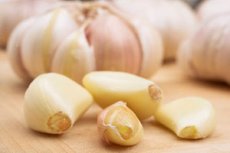
In a study recently published in the journal Nutrients, a group of Chinese scientists conducted a systematic review and meta-analysis to examine the effects of garlic on blood lipid and glucose levels in humans.
Chronic noncommunicable diseases, including cardiovascular diseases, chronic respiratory diseases, cancer and diabetes, cause 41 million deaths each year. Glucose and lipids are important for energy, and their imbalance can lead to atherosclerosis, diabetes and fatty liver disease. Dyslipidemia, characterized by high total cholesterol (TC), low-density lipoprotein (LDL), triglycerides (TG), and low high-density lipoprotein (HDL), is a major risk factor for cardiovascular disease. Current treatments for metabolic diseases are aimed at relieving symptoms and have side effects. Garlic, rich in compounds such as allicin, shows potential in regulating glucose and lipid levels. Further research is needed to understand its mechanisms of action, optimal dosages and long-term effects.
The studies involved 1,567 people from various countries, including Canada, the USA, Korea, Iran, Pakistan, India, Israel, Russia, Poland, Brazil and Denmark. Participants' ages ranged from 18 to 80 years, and the period of garlic use ranged from 3 weeks to 1 year. Participants had a variety of health conditions such as hyperlipidemia, type 2 diabetes, coronary artery disease, non-alcoholic fatty liver disease, myocardial infarction, obesity, hypertension, polycystic ovary syndrome, and some were healthy adults. Most participants received no medication during the study, while some continued to take their daily medications. Garlic preparations included powder, raw garlic, oil, aged extract and enteric-coated tablets in various daily doses.
A meta-analysis assessed the effect of garlic on measures of glucose metabolism. Eight studies with 12 effects observed significant reductions in fasting glucose (FBG) levels due to garlic consumption. Three trials with seven effects showed a significant effect on HbA1c levels. An analysis of 17 studies with 19 effects showed a significant reduction in total cholesterol (TC) levels, while 19 studies with 22 effects showed a positive effect on HDL levels. For LDL, data from 18 randomized controlled trials with 21 effects indicated significant reductions due to garlic consumption.
In conclusion, garlic significantly improved FBG, HbA1c, TC, LDL and HDL levels but had no effect on TG levels. The study used a random effects model due to high heterogeneity, with garlic consumption periods ranging from 3 weeks to 1 year. Various forms of garlic, such as raw garlic, aged garlic extract, and garlic powder tablets, have been effective. Despite some publication bias and variation in interventions, the beneficial effects of garlic on blood glucose and lipid profiles were evident.

